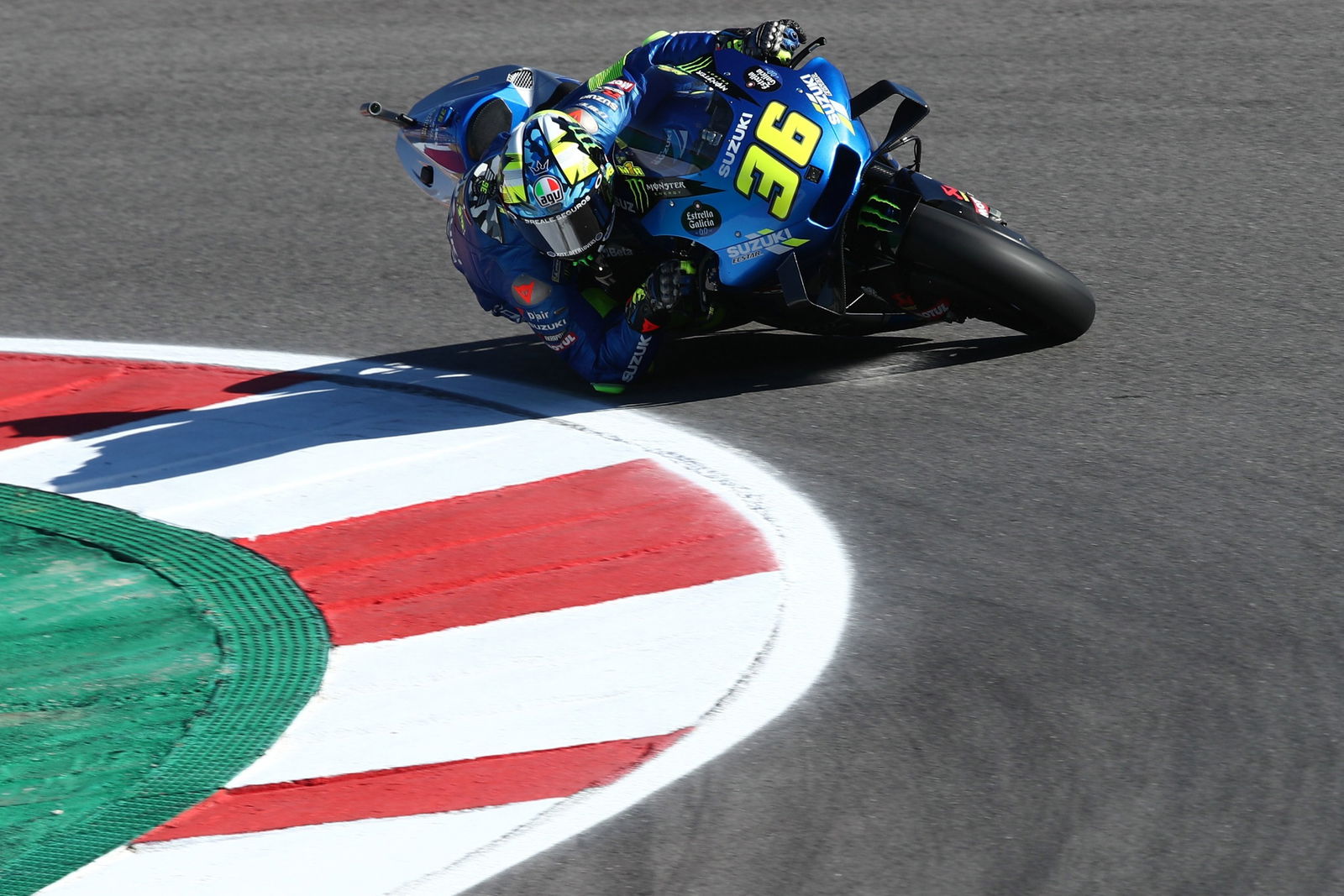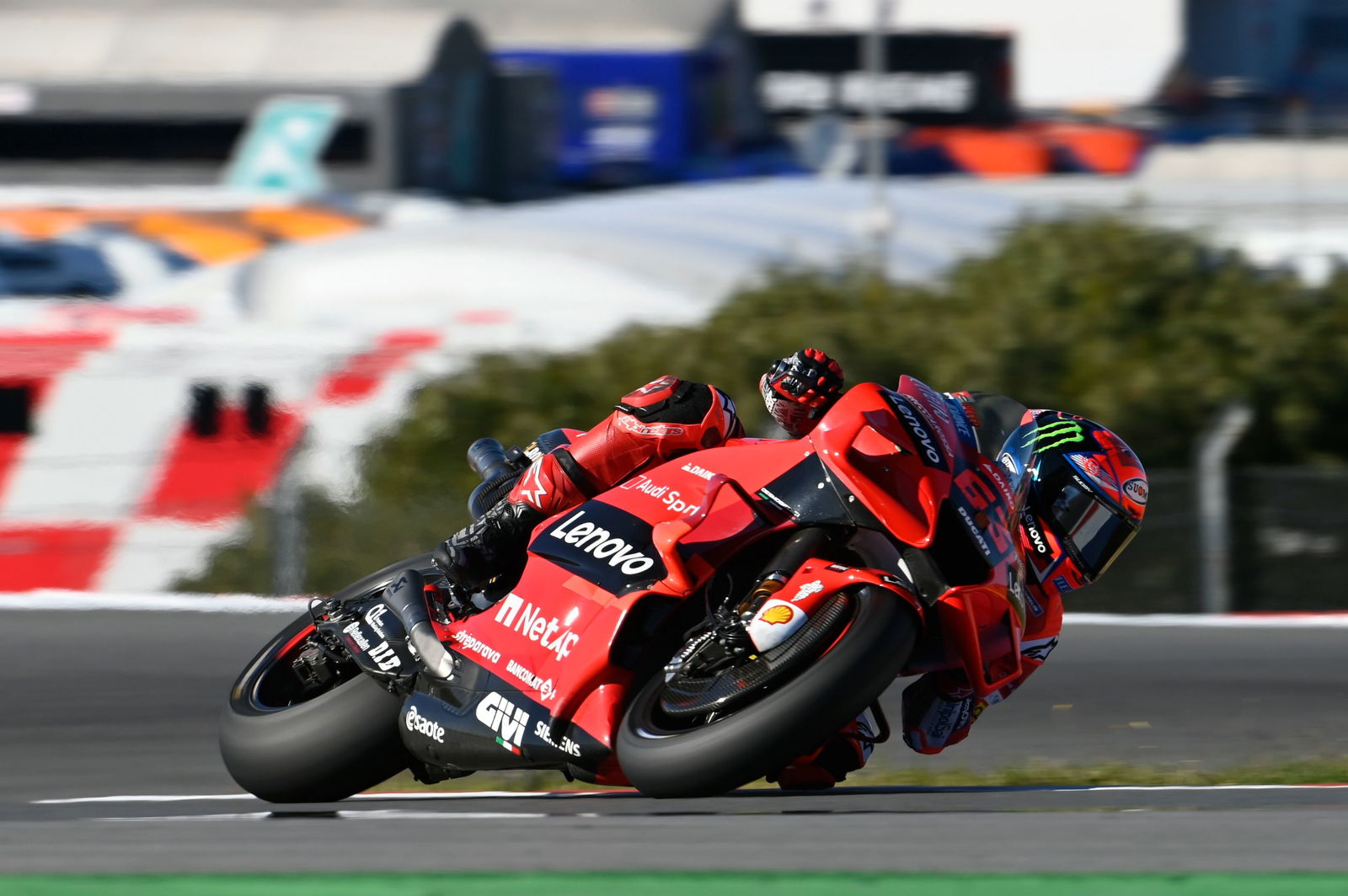Portimao MotoGP: Rain light test for MotoGP's future automatic warning system

The most innovative part of MotoGP's three-pronged response to teenage fatalities in junior classes this season is development of 'automatic, near-instant warning systems for all following riders/motorcycles'.
The tragic accidents suffered by Moto3/SSP300 riders Hugo Millan (14), Jason Dupasquier (19) and Dean Berta Vinales (15) all followed the nightmare scenario of a fallen rider being hit by other competitors.
The purpose of the new warning system is therefore to try and alert riders as soon as an accident occurs. 'The first tests will start as soon as the beginning of the 2022 season, and the system must and will be applicable to Championships of all levels, including Talent Cups'.
Details of how the system might work have been scarce, with airbag deployment or bike sensors among the possibilities for triggering the system 'automatically' in the event of a rider falling.
Yellow flag alerts sent to Race Direction by marshals might also be a trigger option, but that would mean the warning system relying on human input rather than being truly automatic.
Either way, it appears that once triggered by a rider falling, the warning system could make use of the rear 'rain' light located at the back of each bike.
During Friday practice at Portimao, riders took to the track with the red lights - currently only used in wet conditions, to help following riders spot bikes in the spray - illuminated to see if they was still visible in bright and sunny conditions.
The idea seems to be that if the automatic warning system is triggered by a fall, the red light on each bike will flash to warn other riders of an incident ahead, in addition to the usual display of yellow flags by marshals and lighting panels.
"From FP1, I saw all the bike lights were on," said LCR Honda's Takaaki Nakagami. "Even during the middle of the day with the sunshine, it was quite easy for me to see it. So it's good for the future.
"I heard that for the future, I don't know if next year or two years later, they are thinking for if there are yellow flags then all the bikes will start to blink the light, and they wanted to test.
"But this time it was just like in wet conditions, where they are switched on the lights all the time. But with the sunshine and blue sky, I expected it to be more difficult to see. But to be honest, even during riding it's quite easy to see. So I think it helps for the future, for safety, for the yellow flags, and to understand more easily."
Nakagami's only concern was that some lights are currently easier to spot than others.
"Just it depends, because [the lights] have a different position on all the manufacturers, so it looks like the Yamaha is more easy to see. But Honda and Ducati, it's a little bit difficult, the position is not in the centre, a little bit down," he said.
Aprilia's Maverick Vinales added: "I think it's very interesting because it's very easy to see the light and if there is no light and then suddenly you see the light come on it means there are yellow flags. So yeah, it's quite easy to see that there is a yellow flag without losing the concentration."
"You cannot see as clear as when it’s raining because of the sun. But it’s nice. Sure it’s helpful. It’s not producing any problems," agreed Repsol Honda's Pol Espargaro.
Espargaro also suggested that his present Dainese system of a flashing red light on the leathers when the airbag is deployed should be more widely used.
"My leather brand Dainese is using a light on the leathers. When you crash it starts shining in red. It’s a super good idea," Espargaro said. "When you’re on the floor, it’s pumping in red.
"The organisation wants to go in the direction of the bike with the red lights in the rear. Dainese has been thinking earlier and faster than Dorna and this [red light on the leathers] is super safe as well."


